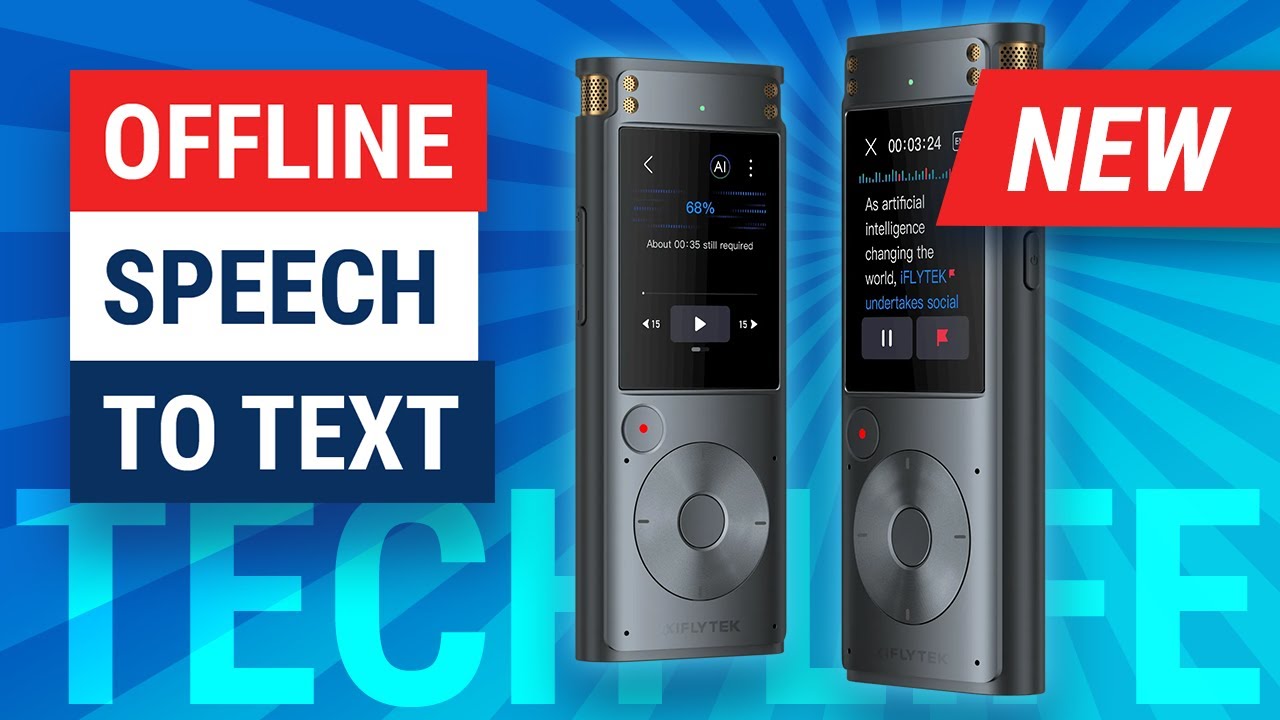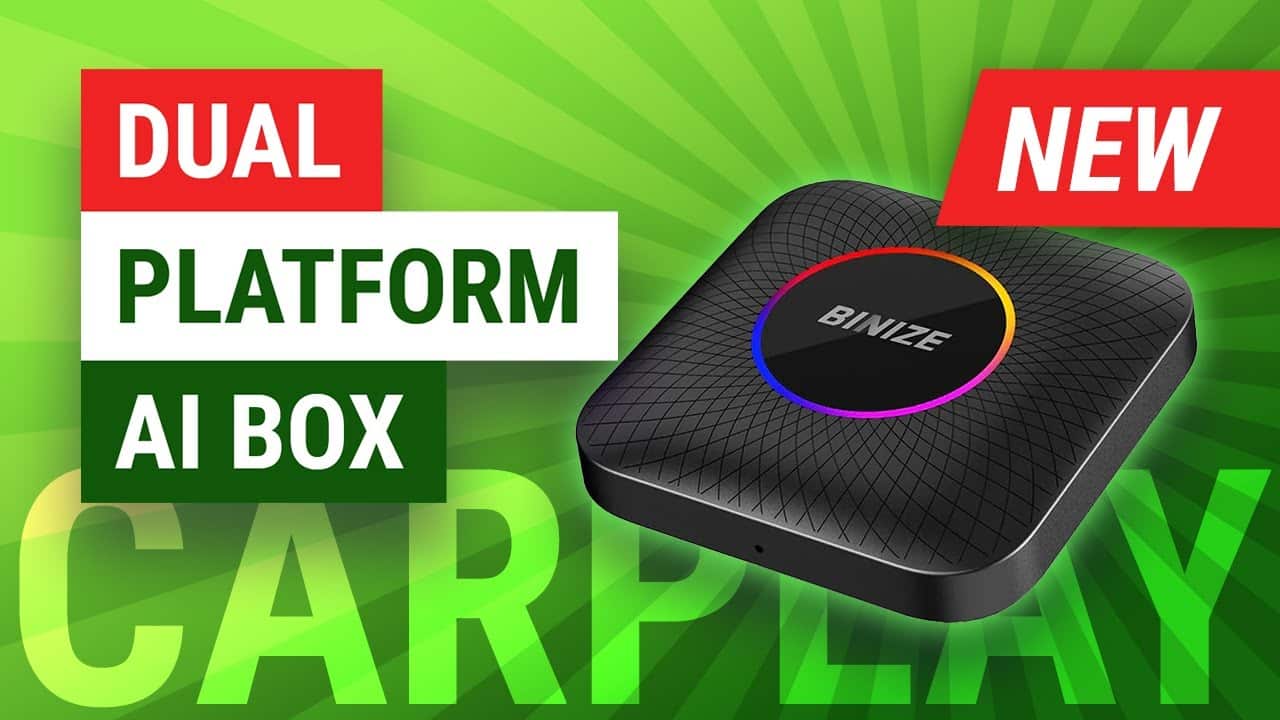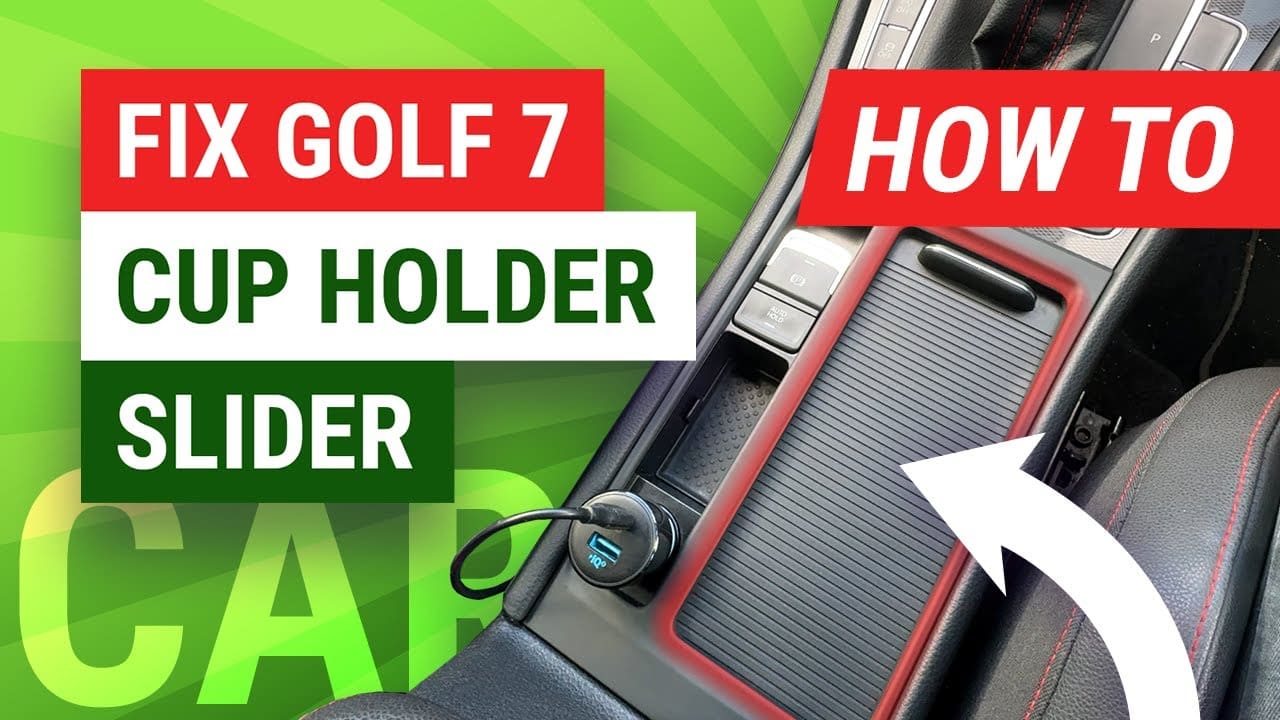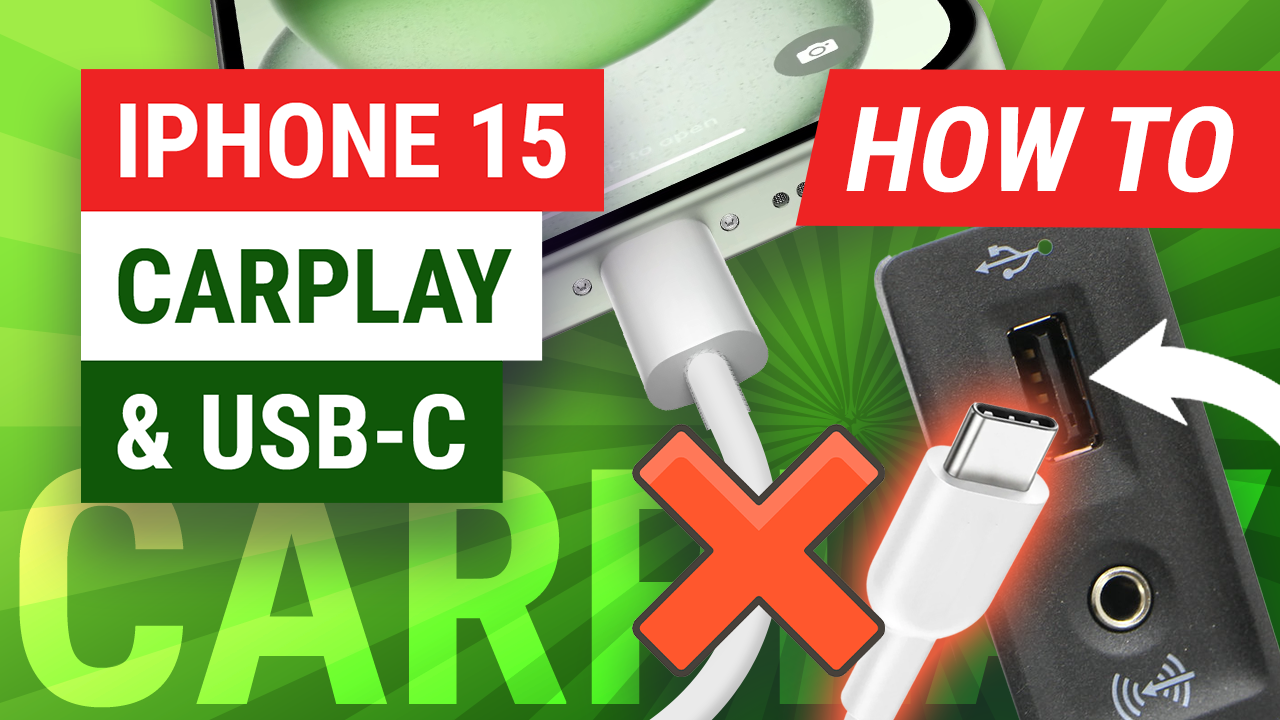It has taken JVC a while to offer their own Apple CarPlay enabled receiver, but the wait is now over with the release of the KW-V820BT. Even though we’ve seen some CarPlay-enabled units release over the past year from their partnered company, Kenwood, it is the first to be branded under the more, let’s say, ‘casual consumer friendly’, JVC brand.
Retailing for RRP £549.99 ($540 USD) this JVC CarPlay-ready unit slots into the mid-tier bracket of available CarPlay receivers currently on the market. So does being late to the party mean that this JVC offers the best suite of features? Let’s find out…
First Impressions
Whilst sliding the KW-V820BT out of the box, it becomes apparent that the unit packs the same dimensions as most other CarPlay receivers, including the Pioneer SPH-DA120 (comparison picture below). With the install dimensions of 178 x 100 x 155mm, unlike the much cheaper Pioneer unit however, the JVC packs a rather discrete DVD/CD drive slot at the very top of the unit.
Its resistive display carries a less reflective aesthetic than what’s found on our test Alpine and Pioneer receivers, both of which feature glassy capacitive displays. This can prove helpful to reduce glare, but at the cost of a less ‘shiny’ looking appearance. The black bezel surrounding the front, angles sharply towards the display, creating a ‘sharp and edgy’ look to the receiver than the most flat fronted displays found on rival head-units.

The Pioneer SPH-DA120 (left) alongside the JVC KW-V820BT (right)
Flipping the receiver around to the back-side we’re faced with quite a conservative display of ports and hard-wired cables. Here we have the usual power supply/cable loom socket and a set of front, rear and subwoofer 4.0V preout terminals. A hard-wired Video output, Rear View Camera input and car antenna input cable sprout from the rear of the casing.

The rear of the JVC KW-V820BT (left) against the Pioneer SPH-DA120 (right)
Depending on your in-car setup, the following ports are ready to be connected, including: a 3.5mm external microphone port, AV-Out/Audio output 3.5mm port, external GPS antenna socket and an iPod/AV input 3.5mm port. The receiver’s high-speed USB connection is handled with a detachable cable that contains two 1 metre lengths of 1.5A powered USB female sockets. Each of these can be used to connect either a 30-pin to USB cable for older iPhones/iPods (for audio only), a Lightning cable for newer iPhones/iPods (for CarPlay) or a USB device (for music and video). For a medium range receiver I was surprised to see there were no HDMI connections featured here on the JVC.
Installation into our test pod was kept surprisingly simple, with the JVC sharing the same wiring connection terminal layout as the Pioneer. Plug and play, like it should be – brilliant!
Power Up!
Powering up the JVC takes you to its Home screen (pictured above) after displaying its own JVC branded launch screen – of which I couldn’t easily see an option to customise with my own launch image.
The Home screen displays four clearly visualised options: Apple CarPlay, Tuner, BT Audio and Phone. On the right side there’s a thin column of additional sub options that consists of: displaying the current playback source, view the system’s additional control menus, view the system settings and eject any inserted discs.
Whist connected via Bluetooth, the three main options on the Home screen are facilitated by the receiver’s own software interface design which, like most other receivers to date, still seem to be stuck in the late 1990s, and lack any form of up-to-date visual aesthetics and general user experience that we’ve come accustomed to on our smartphones and tablets.
Just like the Pioneer, navigating through the menus on JVC felt like running through a maze, full randomly positioned icons and buttons. Whether you are searching through radio stations, playing through music via Bluetooth/MP3/CD, or watching a DVD; icons, lists and buttons litter the screen here there and everywhere without a clear layout or any kind of consistency.
Thanks to the simple Home screen though, with its bold set of four options, once your iPhone is connected, a simple tap on the Apple CarPlay button will take you into Apple’s own in-car ecosystem. Non-Apple users have the option to connect their devices via Bluetooth and play their music, browse contacts and call them via the receiver’s own, all but cumbersome, software. Android users have the option to install the JVC Control App, which allows owners to display content and control their Android apps via the JVC’s touch-screen display – Something us iOS owners could do with too – if Apple ever allowed such a feature on their platform!
6.2″ Usable Display
The promotional blurb will tell you that the JVC has a 6.8-inch display, and they would be right, but with the included DVD/CD disc drive, touch-sensitive control buttons that span the left side of the unit, and the ‘edgy’ bezel, what we’re really left with is a 6.2-inch of useable display. This is a size that’s very common with receivers that have controls occupying the left or right side of the unit.
From the 6.8-inch display, 0.6 of these ‘precious’ inches are kept for the unit’s left-side panel of touch-sensitive controls. Four control buttons occupy this area, and they are: Home (also used to trigger Apple’s Siri), Display (that switches between CarPlay and other sources) and Volume up and down. The unit’s top-left corner power button also acts as a popup short-cut menu toggle button, granting quick access to viewing the system Home screen, Phone menu, Voice Dialling, Graphic Equaliser options, Picture Adjustment options and Rear Camera View.
The JVC is our first test CarPlay receiver that features a resistive display. So after spending longer than a brief store demo, I was impressed at how responsive the display was. Even though the resolution is just the same as every other CarPlay unit on the market (800×480 pixels), the JVC’s resistive screen seems to soften the display’s pixels – creating a less pixelated look to CarPlay icons. This also might just be the smaller screen-size (resulting in a higher density of pixels) than what I am accustomed to on the 7” Alpine display, but comparing alongside the 6.2-inch display of the Pioneer, there is better clarity on the JVC.
An iPhone’s generation and the receiver’s resolution and display/touch technology are two key areas that can effect your general CarPlay experience. With each new generation of iPhone, CarPlay gets faster and more responsive. I found this out myself when I went from an iPhone 6 to 7 recently – skipping a generation brought a noticeable difference. Whilst using the JVC with my iPhone 7, I first thought that its resistive screen was the reason why it was more responsive than the last test on the Pioneer as-well-as daily use of my Alpine unit, but then I remembered it was my iPhone 7 that was causing this impression and the speed is just as quick as our other two test units.
Audio Options Aplenty!
Compered to the other demo units I’ve reviewed, I found that this JVC has a greater amount of options in the audio department. I wouldn’t think that would be possible after the Pioneer, but JVC seems to do this a bit better.
From adjusting the effects, soundstage, balance and fade, to the full-blown equaliser, with its many options and presets, this JVC has any audiophile truly covered. For me, I found a few presets that I could easily be settled with, but for anyone that has enough time and patience to achieve the perfect soundstage in their vehicle, there are plenty of options here to tweak to your hearts content!
Apple CarPlay
So what’s Apple CarPlay like on this JVC? We’ll, first let’s throw in our disclaimer:
It is worth highlighting that CarPlay is an evolving software platform that lives on your Apple iOS device, and it not in the receiver itself. So whichever aftermarket receiver you choose to install in your vehicle, the CarPlay experience will be the same throughout – Don’t let anyone else tell you otherwise!
We will see over many days, months and years, Apple’s CarPlay feature set constantly evolve via regular iOS updates. The same can be said with CarPlay compatible applications on your iOS device. These also will have intermittent updates from its developers, which will usher in new features, improvements and functionality.
I will not report on CarPlay itself on this system because, what is written today can change or could be improved upon next month with software updates, so be sure to read our other articles for opinions on Apple CarPlay OS, its app updates and changes to Apple’s CarPlay platform with each new iOS update.
As expected, Apple CarPlay on the JVC is the same as on all other receivers I’ve tried or reviewed. Speed of navigation and browsing Apple’s platform is at the whim of your own iOS device, so those with the latest Apple hardware will experience a rapid and smooth experience than those with iPhones that are few generations old.
The resistive screen allows for a more tactile browsing experience. The screen is surprisingly responsive to my touches and unlike the newer capacitive technology, you can interact with the screen through gloves, or any other object that comes to hand, and it doesn’t require the warm touch of your fingertips. On the flip side, with resistive technology, as it detects any form of touch, any miss hits will also be detected and carried out on screen, so swiping through the CarPlay dashboard of icons sometimes launched applications I didn’t want to open. This isn’t too much of a problem if you have all the apps you need on the one screen, as it was more an issue when swiping between screens of apps.
On a whole, CarPlay works well on the JVC. It’s responsive screen is also bright and clear, with the added options to improve on the brightness, contrast and even black level, via the system’s settings menu. These small but valuable options are absent on some rival headunits, and help enhance the CarPlay experience a little further. For example: I wish I could adjust the contrast for CarPlay on my Alpine, as I find Apple Maps’ colours can appear washed out, whilst on the road, and adjusting the black level on this JVC really makes Apple Maps ‘pop’.
Let’s Wrap Up
I’ve only covered two of the low end Apple CarPlay receivers on the market, from Alpine and Pioneer. Not only is this my first mid-range receiver, it’s also my first resistive display receiver on test here at CarPlay Life.
My initial views on resistive technology has been assured since my recent experience with the JVC. What I thought was an old archaic technology when compared to today’s smart phones, tablets and capacitive displays, has ended in a ‘this isn’t that bad’ conclusion. It certainly has its uses, as outlined above.
But would I choose a resistive display over a capacitive one? Probably not. I prefer the glossy display of a capacitive screen in a car, and although the resistive screen on the JVC has amazing blacks, it doesn’t seem as deep as the blacks found on a capacitive screen. Then there is the interaction. I found I was getting too many miss-touches on the resistive screen over the test Alpine or Pioneer with their capacitive screens.
I have to raise my resolution concerns with the JVC also. It is always going to be an issue until manufacturers decide to step into the 21st Century and give us display resolutions that can match or at least come close to the phones we’re carrying around in our pockets or browsing on our tablets. My fingers remain crossed for the next-generation of headunits to up their game in the resolution department.
For a receiver that costs nearly £100 more than the budget options from the Alpine and Pioneer, I feel I am not getting as much of a deal as the feature-laden Pioneer SPH-DA120. To me the difference between the base Pioneer and the JVC is the CD/DVD drive – that’s if you’re still going to use that. The JVC KW-V820BT is a solid and capable receiver, however if your in-car entertainment fully relies on the Apple CarPlay ecosystem and radio, then you’re better off saving your money and seeking a budget CarPlay system. If you’re an audiophile that requires a CD/DVD drive, then the JVC is worth your consideration.
















